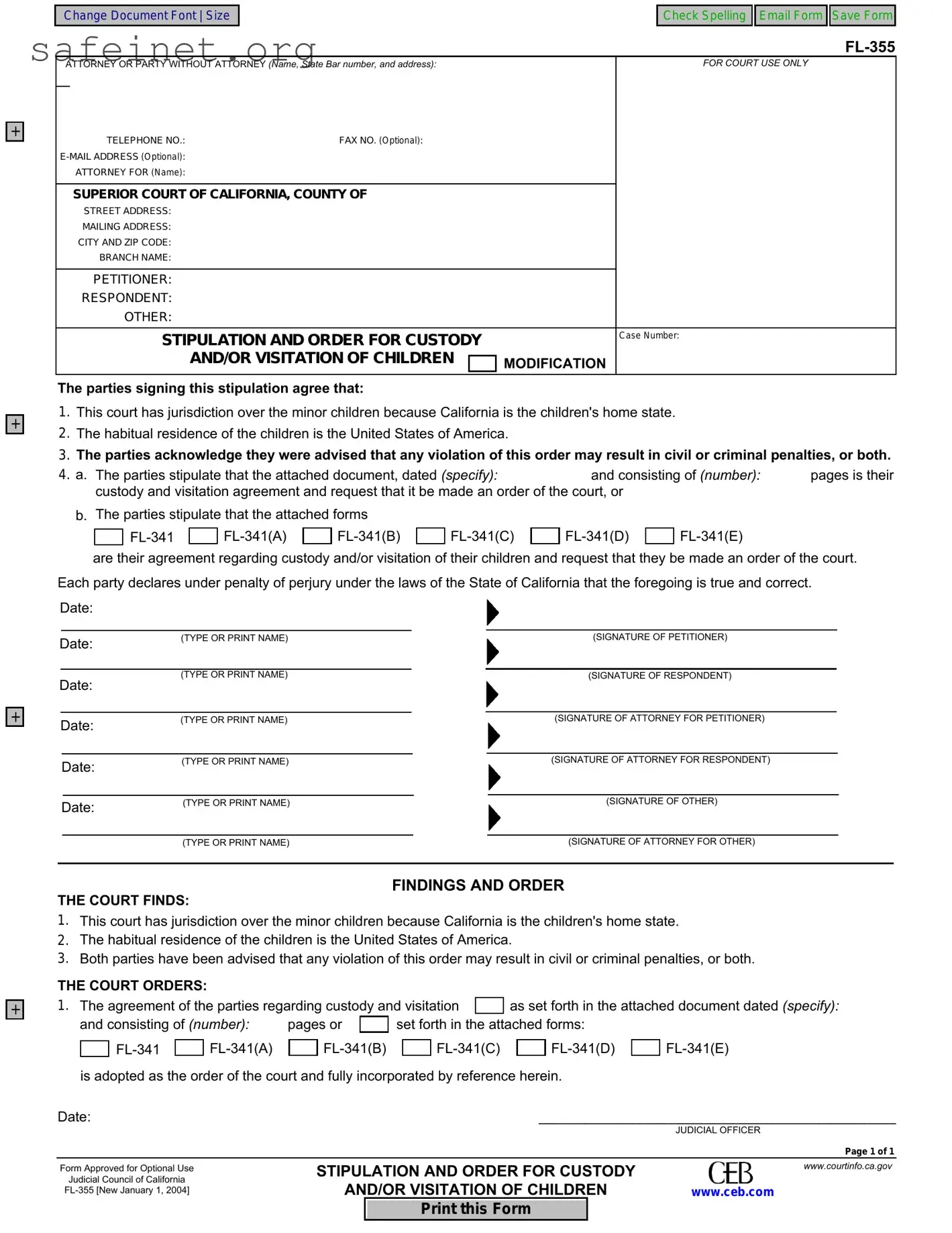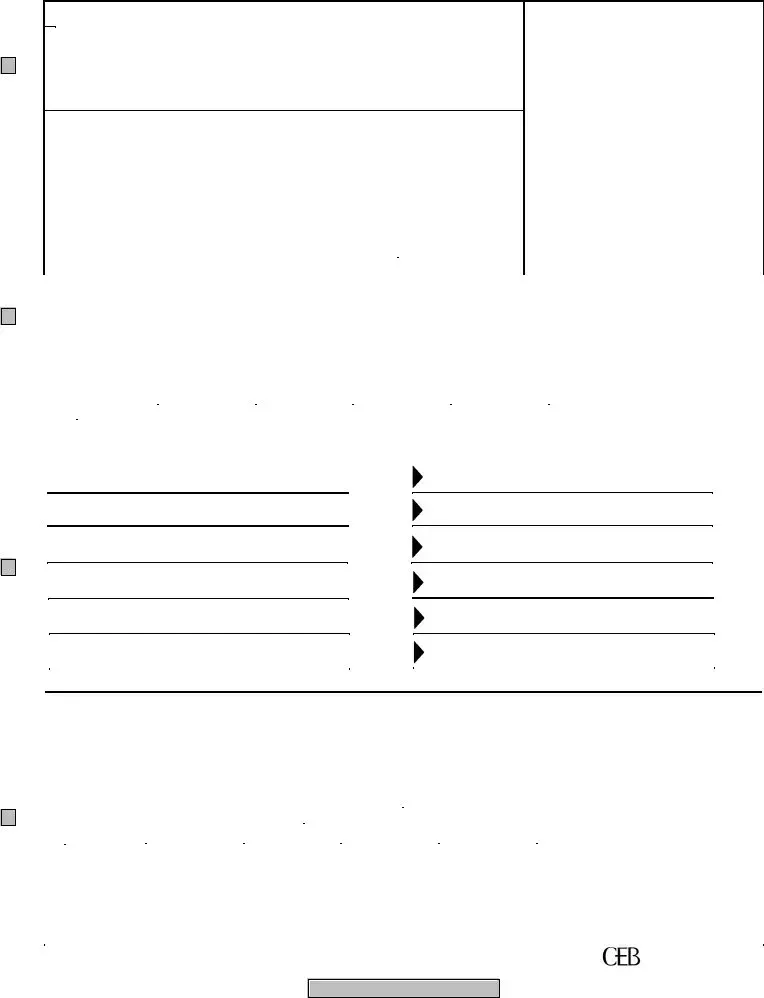What is the purpose of the FL-355 form?
The FL-355 form is a legal document used in California to establish an agreement between parents or guardians regarding the custody and visitation of their children. By signing this form, the parties demonstrate their mutual consent to the terms outlined in the attached documents, which can include specific visitation schedules, custody arrangements, and any other relevant conditions. This stipulation is then submitted to the court to become an official court order, ensuring legal enforcement.
Who needs to sign the FL-355 form?
The FL-355 form must be signed by both parties involved in the custody and visitation agreement. This includes the petitioner and the respondent, as well as their respective attorneys if legal representation is present. Each party's signature indicates their understanding and acceptance of the stipulated terms. It is essential to ensure all signatures are properly executed, as any omission may affect the validity of the agreement in court.
What happens after the FL-355 form is submitted to the court?
Once the FL-355 form is submitted, the court will review the agreement to ensure it is in the best interest of the children involved. If the court finds the proposed arrangement to be reasonable and within its jurisdiction, it will adopt the terms as a formal court order. This order will then be enforceable by law, meaning that any violations of the custody or visitation terms can lead to legal repercussions for the offending party.
What are the consequences of violating the terms outlined in the FL-355 form?
Violating the terms of the FL-355 form can result in significant legal consequences. The parties are made aware that any breach of the custody or visitation agreement may lead to civil or criminal penalties, or both. Courts take such violations seriously, and consequences may include modifications to custody arrangements, fines, or even criminal charges in severe cases. It is crucial for all parties to adhere strictly to the court order to avoid potential legal disputes.

